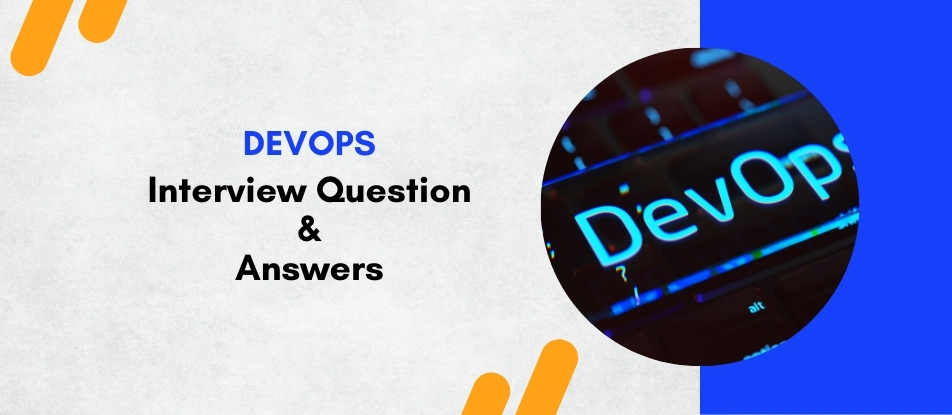
DevOps® Certification Training is designed to equip professionals with the essential skills needed for today’s digital age. It covers core practices such as continuous integration, continuous deployment, automated testing, and infrastructure management. Participants will learn how to streamline workflows and improve collaboration between development, operations, and QA teams. This course ensures you gain hands-on experience with the leading DevOps tools, preparing you for success in fast-paced software environments.
DevOps Interview Questions - For Intermediate
1. What is the difference between Continuous Deployment and Continuous Delivery?
Continuous Delivery is a DevOps practice where code changes are automatically prepared for a release to production, but deployment is manually triggered. Continuous Deployment goes a step further by automatically deploying every mainline commit that passes the test phase into production. Continuous Delivery allows more control over when changes are released, while Continuous Deployment emphasizes maximum automation.
2. How does a Blue/Green Deployment work in DevOps?
Blue/Green Deployment is a technique used to reduce downtime and risk by running two identical production environments, only one of which is live at any time. When you need to deploy a new version, it is deployed to the inactive environment (Green). After testing, traffic is switched from the current active environment (Blue) to Green. If issues arise, you can quickly revert back to Blue.
3. Can you describe the importance of the DevOps Dashboard?
A DevOps Dashboard provides a visual representation of key performance indicators and metrics related to application development and infrastructure. It's important because it offers real-time insights into the health of systems, progress of deployments, and operational challenges, enabling quick decision-making and enhancing transparency across teams.
4. What role does automated testing play in DevOps?
Automated testing is critical in DevOps as it ensures that the software is tested consistently and frequently, allowing teams to detect bugs early and improve software quality. Automation speeds up the testing process, enables more comprehensive test coverage, and integrates seamlessly into CI/CD pipelines, supporting rapid deployment cycles.
5. How do you handle rollback in a DevOps environment?
Rollbacks in DevOps are managed by ensuring that the deployment process is reversible. This can be achieved through automated scripts that can restore the previous version of the application quickly if the new deployment fails. Effective version control and release management practices are crucial for smooth rollback processes.
6. Explain the use of containers in DevOps.
Containers encapsulate an application with all its dependencies, making it easier to move the contained application between different environments. This consistency simplifies development, testing, and production workflows in DevOps by eliminating the "it works on my machine" problem, enhancing development speed and reducing environmental discrepancies.
7. What is Canary Deployment?
Canary deployment is a method used to roll out updates to a small group of users or servers first, before making them available to everybody. This technique allows teams to test the stability and performance of a new release in the production environment with minimal risk before a full rollout.
8. How does cloud technology fit into DevOps?
Cloud technology provides scalable and on-demand resources that are ideal for implementing DevOps practices. It supports rapid provisioning and de-provisioning of resources, aligns with the automation and agility goals of DevOps, and offers tools and services that facilitate CI/CD, monitoring, scaling, and more.
9. Discuss the importance of collaboration in a DevOps culture.
Collaboration is fundamental in DevOps as it breaks down silos between the development, operations, and quality assurance teams. Effective collaboration enhances transparency, accelerates innovation, reduces errors, and improves product quality by ensuring that all team members are aligned and can share feedback quickly throughout the development cycle.
10. What is a DevOps pipeline and what are its stages?
A DevOps pipeline is a set of automated processes for software delivery. It typically includes stages such as Build (compile and package code), Test (run automated tests), Deploy (release the code to production), and Monitor (track the application’s performance). This pipeline automates the steps from code commit to production deployment.
11. How do you manage database changes in a DevOps environment?
Managing database changes in DevOps involves using database version control, automated testing, and release automation tools. Techniques like schema migration scripts managed through version control systems and tools like Liquibase or Flyway can help automate and track database changes, ensuring consistency across environments.
12. Explain the concept of GitOps and its relevance in DevOps.
GitOps is a way to do Kubernetes cluster management and application delivery. It uses Git as a single source of truth for declarative infrastructure and applications. By using Git to handle version control and automation, GitOps provides a consistent way to manage cluster configurations and deployments, enhancing the transparency and traceability of the DevOps process.
13. What are some common metrics used to measure DevOps success?
Common metrics include deployment frequency, change lead time, change failure rate, and mean time to recovery. These metrics help evaluate the efficiency and effectiveness of DevOps practices, providing insights into areas of improvement for development, deployment, and recovery processes.
14. How can organizations foster a DevOps culture?
Fostering a DevOps culture involves promoting collaboration across teams, encouraging continuous learning and experimentation, integrating automation in all phases of the software lifecycle, and maintaining open communication. Leadership must also support cultural change by providing the necessary tools and training, and by recognizing and rewarding team efforts.
15. What challenges do you foresee in the future of DevOps?
Future challenges in DevOps may include scaling DevOps practices in large organizations, integrating advanced technologies like AI and machine learning, managing data privacy and security in increasingly complex systems, and maintaining the pace of innovation while ensuring reliability and stability. Addressing these challenges will require ongoing adaptation and learning.
DevOps Interview Questions - For Advanced
1. What are the best practices for managing a multi-tenant architecture in DevOps?
Best practices for managing a multi-tenant architecture in DevOps include implementing robust data isolation to prevent tenants from accessing each other's data, utilizing containerization to dynamically allocate resources, and automating deployment processes to ensure consistency and minimize downtime. Scalability is critical, so using tools like Kubernetes for orchestration can help manage loads dynamically. Continuous monitoring and implementing proper security measures are also paramount to protect data integrity and privacy.
2. How does container orchestration work in DevOps and what tools would you use?
Container orchestration automates the deployment, scaling, and management of containerized applications. In DevOps, tools like Kubernetes and Docker Swarm are used to manage these containers efficiently. Kubernetes, for instance, schedules containers on a cluster, manages their lifecycle, scales them based on traffic, and ensures they are running as intended. It integrates with DevOps to streamline the development process by providing a consistent environment for development, testing, and production, and simplifying deployment and rollback processes.
3. Can you describe the concept of Blue-Green deployments and its advantages?
Blue-Green deployment is a technique that reduces downtime and risk by running two identical production environments. Only one of the environments is live at a time. When you need to deploy a new version of your application, you do so in the environment that is currently not serving live traffic (the green environment). Once the new version is up and running, you simply switch the router so all incoming requests go to the green environment instead of the blue one. This approach allows quick rollback if needed and minimizes interruptions to the service.
4. Discuss the role of AI and machine learning in DevOps.
AI and machine learning can significantly enhance DevOps practices by automating complex decision-making processes and improving operational efficiency. For example, AI can be used for predictive analytics to forecast potential system failures or bottlenecks, allowing preemptive action. Machine learning models can analyze historical data to optimize processes and automate routine tasks like traffic routing and anomaly detection. This integration leads to smarter, more proactive operations management, enhancing both speed and reliability of delivery cycles.
5. Explain the importance of network security protocols in DevOps environments.
In DevOps, network security protocols are crucial to protect data, maintain privacy, and ensure uninterrupted service delivery. Protocols like TLS/SSL for data encryption, OAuth for authorization, and SAML for authentication play significant roles. Implementing these protocols helps mitigate potential attacks such as data breaches or DDoS attacks, ensuring that both the development and operations components of DevOps can function securely in a continuous deployment environment.
6. How would you implement a change management process in a DevOps culture?
Implementing a change management process in a DevOps culture involves integrating change management tools and practices into the CI/CD pipeline to ensure changes are implemented smoothly and efficiently. It requires creating automated testing for every change to ensure stability, using configuration management tools to keep track of all changes, and ensuring full team involvement from both development and operations to promote quick feedback and iterative improvement. Documenting every change in a version control system is also crucial for tracking and accountability.
7. What strategies would you use to ensure high availability and disaster recovery in DevOps?
Strategies for high availability and disaster recovery in DevOps include using a combination of cloud services for redundancy, implementing load balancing to distribute traffic evenly across servers, and employing failover mechanisms to switch to backup systems in case of a failure. Regularly backing up data and system configurations, and using infrastructure as code (IaC) to quickly redeploy environments in different regions or zones, are also vital practices. These measures ensure that applications remain available and data is safeguarded against loss or corruption.
8. Discuss how you would optimize the CI/CD pipeline for large scale systems.
Optimizing the CI/CD pipeline for large-scale systems involves several key strategies: segmenting builds into smaller, manageable components; parallelizing tasks where possible; caching dependencies to speed up build times; and utilizing powerful orchestration tools like Jenkins or GitLab CI. Automating as much of the testing and deployment processes as possible to reduce human error and delays is also crucial. Additionally, incorporating feedback mechanisms into the pipeline to continuously refine and improve processes is essential for maintaining efficiency at scale.
9. Explain how microservices architecture impacts DevOps implementation.
Microservices architecture impacts DevOps by enabling more granular control over different parts of an application, thus improving the CI/CD process. Each microservice can be deployed independently, which allows for faster iteration and better scalability. This architecture necessitates robust automation, monitoring, and communication tools to handle the complexity of managing multiple services. Additionally, it challenges traditional security models, requiring a more dynamic approach to secure each microservice independently.
10. How do you manage technical debt in a DevOps environment?
Managing technical debt in a DevOps environment involves proactive identification, measurement, and remediation of issues that, if ignored, could hinder future project velocity or escalate costs. Incorporating regular code reviews, refactoring, and prioritizing technical debt as part of the development cycle are key. Automation tools can also help identify potential areas of technical debt early. Ensuring that technical debt is addressed as part of the sprint planning and not just as an afterthought is crucial for long-term sustainability.
11. What are the challenges of implementing automated security testing in DevOps?
Implementing automated security testing in DevOps faces challenges such as integrating security tools with existing CI/CD pipelines without causing delays, ensuring comprehensive test coverage, and managing the volume of false positives. Balancing speed and security is crucial, as the rapid deployment cycles typical in DevOps environments can often bypass necessary security checks. Training teams to understand security as part of their role and using specialized tools that fit into the DevOps workflows can mitigate these challenges.
12. Describe how performance metrics are used to improve DevOps practices.
Performance metrics in DevOps, such as deployment frequency, change failure rate, and time to recover, are critical for measuring the effectiveness of DevOps practices. These metrics provide insights into areas where processes can be optimized, highlight bottlenecks, and help gauge the impact of improvements. Regularly reviewing these metrics encourages a culture of continuous improvement, helping teams to iterate on and refine their DevOps practices for better efficiency and reliability.
13. How do you handle rollback in a CI/CD pipeline?
Handling rollbacks in a CI/CD pipeline involves setting up mechanisms to quickly revert deployments when a new release fails or causes issues in production. This can be achieved by maintaining artifact repositories where every build is stored and can be redeployed. Automated scripts or manual gates can be used to trigger rollbacks when necessary. The key is to ensure these processes are as automated and tested as regular deployments to minimize disruption.
14. What are some advanced strategies for log management in a large-scale DevOps environment?
Advanced strategies for log management in a large-scale DevOps environment include using centralized logging systems like ELK Stack or Splunk to aggregate logs from various services and components. Implementing structured logging, where logs are output in a standardized format, makes it easier to analyze and query logs. Employing real-time monitoring and alerting tools helps in proactively addressing issues before they affect the system performance or user experience.
15. How does cloud-native computing influence DevOps practices?
Cloud-native computing influences DevOps practices by emphasizing scalable and elastic infrastructural solutions, such as using microservices, containers, and serverless architectures. These technologies facilitate rapid scaling, resilience, and resource efficiency. They integrate seamlessly with DevOps by supporting highly automated environments, enabling quicker deployments, and providing extensive monitoring capabilities that improve operational performance and reliability.
Course Schedule
| Apr, 2025 | Weekdays | Mon-Fri | Enquire Now |
| Weekend | Sat-Sun | Enquire Now | |
| May, 2025 | Weekdays | Mon-Fri | Enquire Now |
| Weekend | Sat-Sun | Enquire Now |
Related Courses
Related Articles
Related Interview
Related FAQ's
- Instructor-led Live Online Interactive Training
- Project Based Customized Learning
- Fast Track Training Program
- Self-paced learning
- In one-on-one training, you have the flexibility to choose the days, timings, and duration according to your preferences.
- We create a personalized training calendar based on your chosen schedule.
- Complete Live Online Interactive Training of the Course
- After Training Recorded Videos
- Session-wise Learning Material and notes for lifetime
- Practical & Assignments exercises
- Global Course Completion Certificate
- 24x7 after Training Support




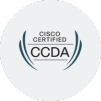
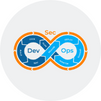
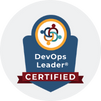
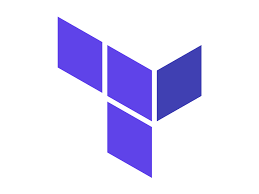
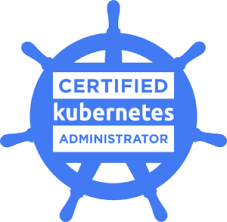
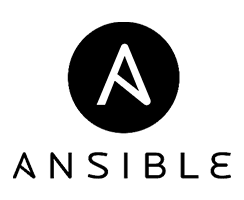
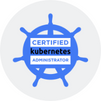




 Join our Live Instructor-Led online classes delivered by industry experts
Join our Live Instructor-Led online classes delivered by industry experts